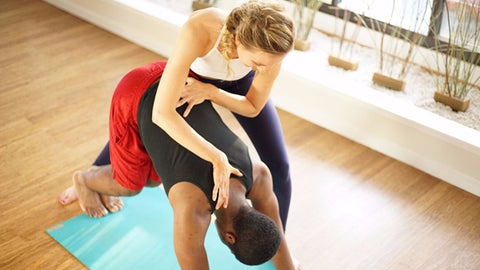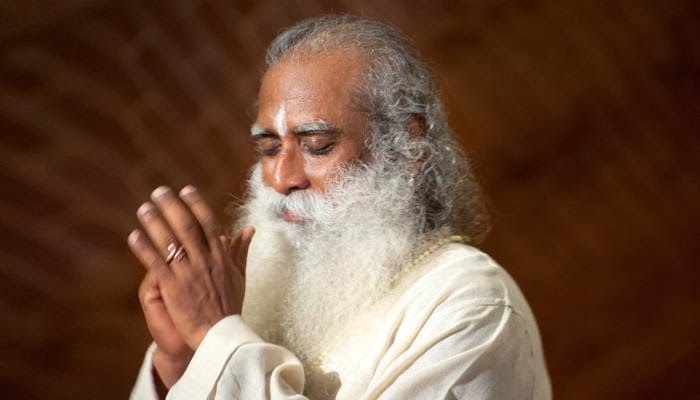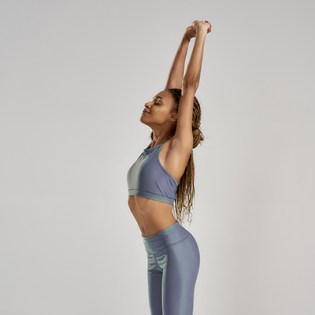
Yoga is often sold as a stress relieving tool. But, what are the actual benefits of yoga? Although these benefits are not fully understood, studies are limited. These benefits include greater body awareness, stress reduction, strength, and flexibility. Learn more. This is a great exercise for both beginners and experts. You will be amazed at the improvements you make in all of these areas. Yoga can also be used to manage stress.
Relaxation
Apart from the physical benefits, yoga practice can also help with relaxation. Yoga exercises require a lot of focus and attention. This allows for relaxation. These benefits are amplified when the practitioner uses their breathing to concentrate and maintain a calm, present presence. Flowing movements like Vinya yoga and Ashtanga yoga promote relaxation. Six series of poses are required for these styles of yoga. Each pose requires that the body remain in a specific position for at most one minute.

Stress reduction
Stress has become a significant public health concern. Yoga may be one way to decrease it. From 2011 to May 2013, a systematic review of yoga studies on stress management examined quantitative articles. The included studies involved all schools of yoga. The authors found 17 studies meeting their criteria. These included six studies from America, three from India and one each from the United Kingdom as well as one from Sweden. Twelve studies demonstrated positive changes in psychological outcomes. Although the studies are preliminary, these results show further evidence of the positive effects of yoga as an intervention for stress management.
Increased body awareness
Yoga has many health benefits. One of the many benefits of yoga is improved body awareness. Yoga helps people to notice physical pain, stress, fatigue and stress by focusing on their internal body sensations. This awareness can help you become more self aware and could even prevent you from getting obese. A person with better body awareness may experience less pain and more self-confidence. Athletes also love yoga as a cross-training tool to strengthen their bodies and prevent injuries.
Strength
Yoga is more than just meditation and flexibility. It is a series isometrically and statically held poses that are progressively more challenging in order to maintain a bodyweight. These exercises use multiple muscle groups as stabilizers and make them more effective that traditional weight-lifting. Yoga exercises allow for more gains while maintaining balance, unlike traditional weight-training that only targets one muscle. In addition, yoga exercises help improve balance and flexibility.

Arthritis relief
Yoga has many benefits for arthritis relief. It is a great way to get your joints moving while also relieving joint pain. Yoga is a safe form of exercise, but it is important to discuss any limitations with your yoga instructor. Your instructor can help you modify your poses and be more aware of what your limits are. It is crucial to consult your doctor if you have arthritis. This will help you avoid aggravating your condition.
FAQ
How long does it take to learn yoga?
Yoga is a lifelong process that requires dedication, patience, and perseverance. Everyone learns at their own pace.
It doesn't matter how old or young you are. Any yoga routine can be mastered if you are committed and persistent.
What has research shown about yoga for wellbeing?
Yoga has been found to improve mental well-being, reduce stress levels, and promote overall wellbeing. It helps people lose weight as well as maintain a healthy body Mass Index (BMI).
Yoga can help lower blood pressure, improve cardiovascular function and boost immunity.
These are just some of the benefits of yoga.
The list is endless!
What are the health benefits of yoga?
Yoga is an ancient practice that originated in India. As a way to improve mental well-being and physical fitness, it was developed over centuries by Hindu monks. Many people use yoga for relaxation and stress relief. Some believe that yoga helps them build strength and flexibility.
Yoga can also improve balance and coordination. This makes it an excellent exercise for older adults who wish to remain active. It can help prevent injuries from falls or other causes.
Yoga is good for your heart because it strengthens your cardiovascular system. If you have diabetes, high blood pressure or are overweight, this is a good option.
Yoga reduces stress and anxiety as well as depression and insomnia. For those with arthritis or fibromyalgia, yoga can be especially beneficial.
As you get older your muscles naturally lose elasticity. But yoga keeps your muscles flexible and strong. You'll find that yoga gives you more energy and stamina as you age.
According to The National Institute on Aging yoga regularly has been shown in studies to reduce symptoms of depression like fatigue and feelings of hopelessness. According to the institute yoga can increase bone density and lower cholesterol.
Yoga can also be used to relieve headaches and back pain. Yoga's gentle pace and slow movements make it a great choice for relieving muscle spasms.
What are some of the best yoga mats available?
There are many types of yoga mats. You can pick one based on price, size, and endurance.
A good quality mat will be thick enough to protect your floor surface from scratches but thin enough to move quickly.
An inexpensive mat might not be enough to provide sufficient support.
Are there classes that I can take with other people?
It depends on the class. Private lessons are offered by some teachers. Other teachers offer group classes, where students can get to know each other.
Some studios offer small classes called "classes in a class," which allows you to meet people with similar interests.
How will my clothes fit after I practice Yoga?
Most likely, yes. Most yoga pants have elastic waists that stretch when worn. They should also be comfortable enough to wear during your workout without feeling constricting.
If you have recently lost weight, finding yoga pants that fit properly might prove difficult. In this case, you might want to consider wearing leggings or shorts instead.
How long does yoga take?
Although yoga takes some time, you can always expect a great workout. It takes time for you to gain strength, flexibility, as well as endurance. It is important to start slowly and increase your intensity gradually until you reach the optimal level.
Consistency will be the key. The more you practice, the better it will be.
Statistics
- Lock in 25% off your Founding Member rate. (corepoweryoga.com)
- Gentle yoga has been shown to ease some of the discomforts of tender, swollen joints for people with arthritis, according to a Johns Hopkins review of 11 recent studies. (hopkinsmedicine.org)
- The American Psychological Association recently shared that 84% of American adults feel the impact of prolonged stress (5). (healthline.com)
- The people in the yoga group were 37 percent more likely to have quit smoking by the end of the 8-week program. (nccih.nih.gov)
- About one in seven U.S. adults practiced yoga in the past 12 months, according to a 2017 national survey. (nccih.nih.gov)
External Links
How To
What is the best position to practice yoga?
There is no one right way to do yoga. Everybody is unique. You only need to know which positions feel comfortable for you.
These are some of the most common positions:
Standing poses – These poses are good for beginners. They allow you to look at your body from different angles. They also make it easier to focus on breathing.
Forward bends - Forward bends are often used to open up tight areas of the body. They can be used while lying down or sitting.
Backbends. Backbends generally are considered advanced poses. Your instructor will be able to help you if you are interested in trying one.
Inversions - These are poses that require you upside down to balance. This type of yoga can be challenging but rewarding.